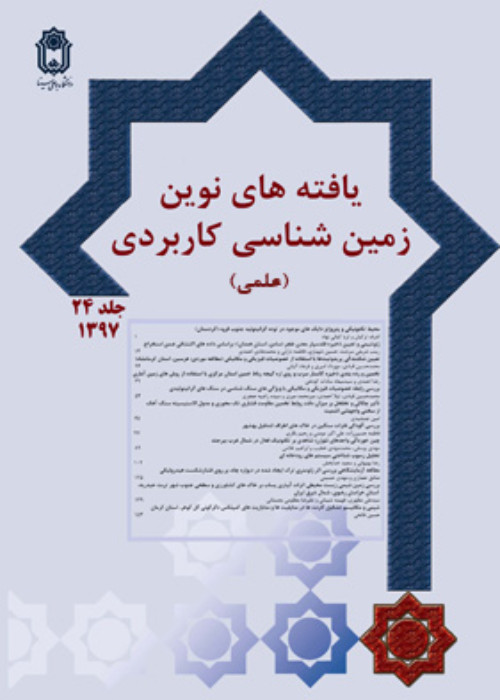Geochemistry, tectonic setting and petrogenesis of Sefidkuh granitoid rocks and comparison with Shahkuh granitoid, West of Nehbandan, East of Lout block
Author(s):
Abstract:
The Sefidkuh granitoid and Shahkuh granitoid are located in southwest of Nehbandan city (South Khorasan province) and east of Lut Block. The Shahkuh granitoid rocks made of two main units by combining monzogranit-granodiorite and syenogranite and its major mineral are quartz, plagioclase, alkali-feldspar, biotite and amphibole. The Sefidkuh granitoid is contain composition range of granite (monzo and syenogranite), granodiorite and composed of the mineral quartz, plagioclase, microcline, orthose and biotite. The plagioclase composition of the Sefidkuh granitoid rocks is often andesine and sometime is albite, it is all andesine in the enclaves of Sefidkuh and Shahkuh and its granodiorite unit, and its oligoclase to andesine in Shahkuh granitoid unit. The biotite composition of Sefidkuh felsic and Shahkuh mafic enclaves is magnesium biotite type, Shahkuh granodiorite is ferrugineous biotite to magnesium and Sefidkuh granite massif and Shahkuh syenogranite unit are ferrugineous biotite and both massif are first magma types. The study of the mineral chemistry and geological masses suggest that these masses belong to calc-alkaline magma related to active continental margin. In the changes to the chondrite- normalized trace element diagrams, rock of this figures are enriched by LILE and LREE, depletion of HREE and HFSE and negative anomalies Sr, Ti, Nb, and Ba indicate that they are compatible with characteristic of the rocks depend on the active continental margin environment. The tectonic discrimination diagrams, show the dependency of shahkuh granitoid massif to the simultaneously dealing environment (syn- collision), and Shahkuh granodiorite massif with volcanic arc subduction (VAG). The petrogenetic diagrams indicated that Shahkuh granodiorite is from a source of amphibolite, Sefidkuh granitoidis from a source of metagreywackes and Shahkuh syenogranite have been achieved from a source of amphibolite to felsic pelite.
Keywords:
Language:
Persian
Published:
Journal of New Findings in Applied Geology, Volume:11 Issue: 21, 2017
Pages:
1 to 16
magiran.com/p1734662
دانلود و مطالعه متن این مقاله با یکی از روشهای زیر امکان پذیر است:
اشتراک شخصی
با عضویت و پرداخت آنلاین حق اشتراک یکساله به مبلغ 1,390,000ريال میتوانید 70 عنوان مطلب دانلود کنید!
اشتراک سازمانی
به کتابخانه دانشگاه یا محل کار خود پیشنهاد کنید تا اشتراک سازمانی این پایگاه را برای دسترسی نامحدود همه کاربران به متن مطالب تهیه نمایند!
توجه!
- حق عضویت دریافتی صرف حمایت از نشریات عضو و نگهداری، تکمیل و توسعه مگیران میشود.
- پرداخت حق اشتراک و دانلود مقالات اجازه بازنشر آن در سایر رسانههای چاپی و دیجیتال را به کاربر نمیدهد.
In order to view content subscription is required
Personal subscription
Subscribe magiran.com for 70 € euros via PayPal and download 70 articles during a year.
Organization subscription
Please contact us to subscribe your university or library for unlimited access!


